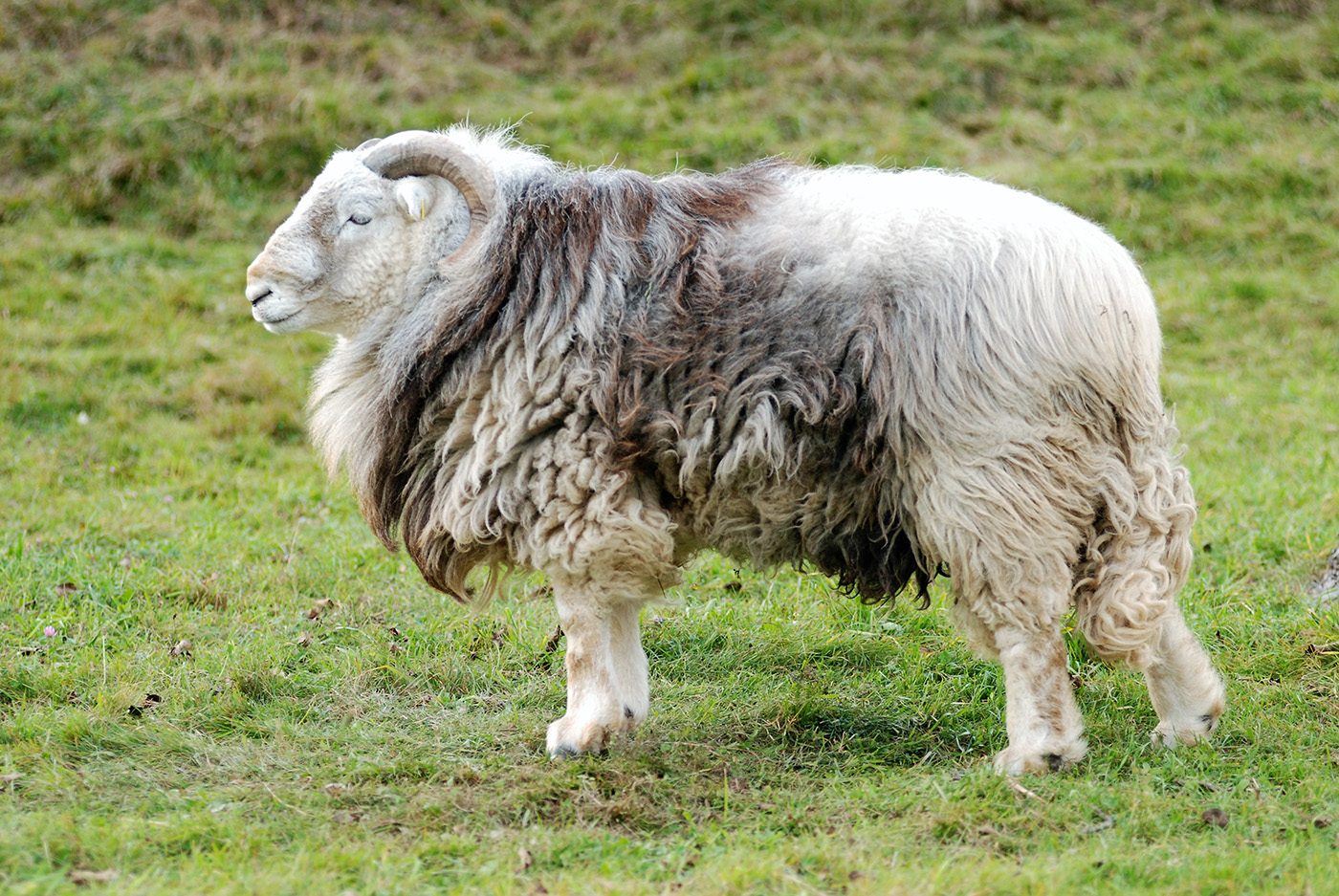Sheep husbandry, use & breeding
Sheep husbandry, use & breeding

Good grazing land is essential
Keeping sheep
It is our main concern that our Herdwicks live in an environment where they can live as independently as possible from us humans. Our animals are outside throughout the whole year but have access to sunny and shady spots and can, if they want to, hide beneath trees, a shelter or in the open barn when it rains, or the weather is windy. These conditions are supposed to help our sheep stay healthy and preserve their natural toughness.
The animals are being fed grass and hay year-round. We do not feed them silage. Corn is used seldom, and mostly to lure them, e.g. when we need to relocate them. This is, so to speak, the substitute for the missing herding dogs. Because there are old fruit trees growing on the meadows, the sheep could eat fruit in the fall. However, they hardly do.
Male and female animals are kept on different pasturages, except for when it is mating season. From the beginning of October to mid-December, female sheep that are at least 18 months old and seem ready for breeding are being kept together with a ram. The other males and females remain in their respective compounds.

Attentive and curious
Sheep use
Sheep are used, depending on the breed, for the production of meat, wool or milk.
How the meat looks and tastes is strongly influenced by the age of the sheep at the time of its death. In principle: the younger the animal is, the more tender, lighter, and lower in fat is its meat. Animals that are older than 2 years often have red to dark red, though, streaky meat and can have a very intensive taste. The meat’s quality, color and taste are also strongly influenced by the way of upbringing of the animal and the food that it was fed.
The amount of wool that a sheep produces depends on its breed, as does the wool’s quality. Respectively, sheep’s wool can be used for different purposes and can be processed in many ways. Besides being used to produce clothes, sheep’s wool can also be used as an insulant, natural fertilizer and as bite protection in agriculture and forestry.
Sheep milk is higher in protein, fat, unsaturated fatty acids and calcium than cow or goat milk. Sheep milk has a milder taste, compared to goat milk. Sheep milk is typically made into yoghurt or cheese.
The use of Herdwicks is limited to their meat and wool, and for landscape management.

Strong and healthy
The Breeding
We are members of the Styrian Association of Sheep and Goat Breeders. In 2020, the association also created a breeding standard for Herdwicks in Austria. Naturally, only healthy, strong rams and ewes that display the typical characteristics of their breed are used for breeding. Moreover, we also try to influence the coloration of the animals.
The hair on the legs and heads of Herdwick sheep turns from black to white within a few months after their birth and stays that way for the rest of their life. The wool coat on the rest of their body turns from black to brown at first, and in their second year of life most of them have dark gray wool. The gray gets lighter every year. Some older animals are almost white. We want to delay the white coloration of the wool for as long as possible through selecting darker animals for breeding.

Our first ram, Claus
Claus
Claus was our first breeding ram. He was born in April 2016 and was one of the three animals that we used to start our Herdwick flock. He produced offspring for three years and is now looking for a new herd.

The ewes Ruby (left) and Gloria (right) with ram Claus
The ewes
Ruby and Gloria will hopefully give birth to healthy, strong lambs for many years, too, so that our herd can grow larger. Both ewes came together with Claus in January 2018 to our farm. The both of them are well-built and have a nice coloration.
In the photo you can see Ruby still having a bit of the brown coloration of the lambs. Gloria has already clearly having more grey wool.
© 2021 Impressum
